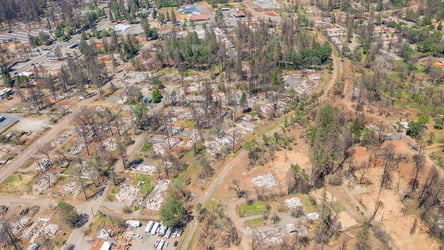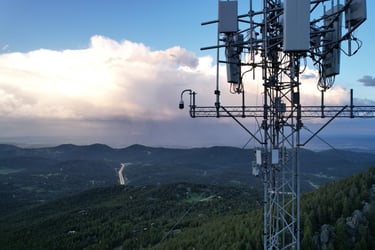Related Posts



You are about to leave Risk Strategies website and view the content of an external website.
You are leaving risk-strategies.com
By accessing this link, you will be leaving Risk Strategies website and entering a website hosted by another party. Please be advised that you will no longer be subject to, or under the protection of, the privacy and security policies of Risk Strategies website. We encourage you to read and evaluate the privacy and security policies of the site you are entering, which may be different than those of Risk Strategies.


As I write this blog, the deadliest and most destructive wildfire in California history – the “Camp Fire” – rages through the northern part of the state, leaving at least 63 people dead so far and over 10,000 structures destroyed. Simultaneously, the “Woolsey Fire” burns through Southern California, destroying with blind indifference everything from celebrity mansions in Malibu to working-class suburban homes.
And consider this: up until now, the costliest California fire season on record was last year, from October to December 2017, in which insurance claims from wildfires in California added up to almost $12 billion.
Climate change and the warming of the world’s atmosphere, oceans and land have caused a dramatic increase in the frequency and severity of natural catastrophes around the world. Storms-of-the-century are now popping up every year in geographic areas that were once considered relatively safe from frequent natural disasters. Hurricane patterns are changing, causing more coastal flooding than ever before, as evidenced by Houston and North Carolina.
Severe drought caused by climate change in western states is fundamentally altering the range, severity and seasonal duration of wildfires, costing both human life and billions of dollars a year in insurance claims. As more and more high-end communities face the threat of wildfires year-round from extreme dry conditions in most western and southwestern states including Colorado, Montana, New Mexico, Wyoming, Texas, Arizona, Washington, Oregon, Idaho and Utah, disaster planning is becoming a critical part of our conversations with clients and their family office advisors.
Have a Plan
People who have never been concerned with brush fire need to be concerned now. For example, in Santa Rosa, CA (Sonoma County), in a neighborhood that was never considered a danger zone, 19 people lost their lives because they were sitting in their homes when the winds changed and moved the fires unexpectedly.
What can you do to prepare for wildfires?
With climate change’s profound impact on natural disasters, insurance carriers can no longer use the past to predict the future. Their recalibration efforts will affect underwriting, premium rates and claims procedures. Preparing for the worst as outlined above will help you stay in step with these changes.
Wealthy families tend to have homes in beautiful areas with risks of natural disasters. Disaster planning and risk management are an important consideration for any family office. To speak with a knowledgeable risk advisor, contact us at privateclient@risk-strategies.com
This is one in a series of posts looking at the risk and insurance implications of the changing climate. To see the other posts in this series, click here.
The contents of this article are for general informational purposes only and Risk Strategies Company makes no representation or warranty of any kind, express or implied, regarding the accuracy or completeness of any information contained herein. Any recommendations contained herein are intended to provide insight based on currently available information for consideration and should be vetted against applicable legal and business needs before application to a specific client.


